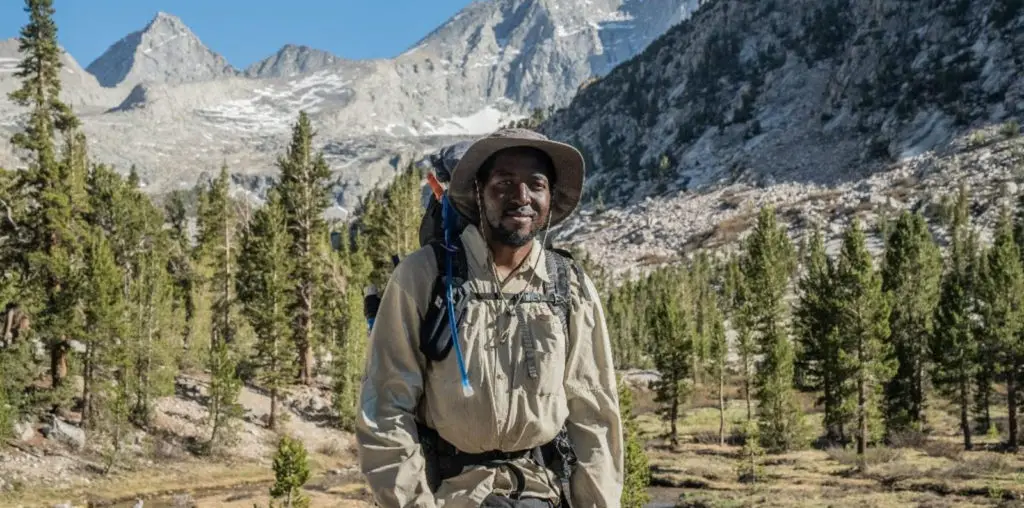
There’s obviously a very strong nostalgia element to what these bands do. That’s really why Kiss reunited in the first place – they were doing a tribute to themselves, their earlier selves.
KC: Oh, and most music now is so crappy anyway. But I won’t lie – there are plenty of bad tribute bands too. Sheer Heart Attack and Larger Than Life are really unusual experiences in the realm of working tribute bands.
RF: We did want to document the better ones, but our main focus was on finding the best stories and the best characters. We wanted the bands to be good, but if we’d said “Let’s just pick the best tribute bands and the best musicians,” they might not have been the most interesting. We made a conscious choice that since there were so many tribute bands out there and we couldn’t capture the whole scene, we weren’t going to try to define tribute bands overall. We just wanted to make a movie about these characters and their stories. There were other bands we interviewed, like the Pink Floyd band here in L.A. called Which One’s Pink. They were nice guys, good tribute band. But Pink Floyd is not really a visual band, and there was no conflict there, no real story to follow.
KC: They were pretty happy-go-lucky, unlike the real Floyd. But we also talked to so many bands on the phone. We talked to a lot of other Kiss bands. Any Kiss band was at the top of our list, because of the makeup and costumes and that whole aspect. But I also felt strongly that, having worked in documentaries beforehand, a great doc is really about the story. We wanted this to be a movie, to draw you in and get you invested in the characters. So at first we just started by following a few stories, not knowing where they were going. We didn’t know how many bands we would end up following, and we didn’t know if the bands we were following would continue to make interesting stories.
Which band would you say was your favorite of them all?
KC: Oooh, you’re not supposed to have favorite children!
RF: Well, for me it’s easy because I’m a huge Queen fan, and it was a Queen tribute band that first drew me in. So initially my attachment was to Sheer Heart Attack. Actually, as good as Larger Than Life is – and they are awesome – I think Sheer Heart Attack is the best tribute band I’ve ever seen. The pure energy they radiate…they just go all the way, completely over-the-top with it. They were incredible.
They seem to be the only band in the film that performs in a recognizable venue, the Troubadour.
RF: Yeah, they had a big following when they were doing their thing. They played the Troubadour, the House of Blues, the Key Club. But certain tribute bands are able to do that more and more now. Wild Child, the Doors tribute, plays big clubs like the Whisky. We talked to them a bit. But the guy in Wild Child, the “Jim Morrison,” has been doing it for a long time and at this point he’s really doing it as a business; we felt maybe the spark was gone. We found bands that were just starting out had a bit more innocence and excitement about them – they weren’t so jaded. That was more interesting, the pure joy of it. That’s what attracted us to Larger Than Life. Here was a band that was just starting to form, and they were all so innocent about it that they ended up becoming the main focus of the movie. We got a sense with Larger Than Life that when you’re around them things tend to happen. They’re just so natural, they don’t censor themselves in front of the camera. The first time we met Jay Harris, the “Paul Stanley”, we could see that he’s on 10 all the time, and that’s the kind of guy you want on camera. He takes his band very seriously, which is great, and it makes him a great subject.
KC: Larger Than Life is based in Modesto, and we found that in smaller cities the people are even more into it. They’re just more passionate about the music somehow.
RF: If they were in L.A. their careers might have been different, but because they’re up in Modesto they didn’t have as many opportunities in their original bands so it became more about the tribute. I think Larger Than Life could actually have a pretty big future. They’re ambitious enough, and they want to take it as far as they can. And the movie could help turn them into a tribute band that people will recognize. After the premiere, it was fascinating to go see them perform and see the reaction they got, because now people knew their story and cared about them as people. It was intense. Every single person packed into that club had just seen them in the movie and was rooting for them, cheering for them. I think they could do really well.
KC: They’re big in Modesto, man. They’ll fill a 2,000-seat theatre. The people there are just more into it. I mean, this is a big country, and most places have no Kiss tribute bands. It would be so exciting to see them pack their bags, get into a van, leave Modesto and go out on tour.
RF: That’s really why we started filming the bands outside of L.A. The people just aren’t as self-aware or self-conscious. I hear there are a lot of Journey fans in Arizona.
KC: That’s where the girls throw their underwear. Laughs But obviously the music was really important as well; we wanted to represent a number of musical genres that are working in the tribute world. It was also a matter of access. It was “Guess what, if you want to be involved in this documentary then we’re going to show up at your house, we’re going to sleep over, we’re going to get you coming out of the bathroom. If you’re not open to that level of access and to not bullshitting about your life, or if you need some kind of PR spin all the time…”
RF: Not everyone wanted to deal with that.
KC: But there’s no story to be had if you can’t get in there.
Did you know the film would end up taking you out of L.A.?
RF: Who knew? Our hope was just that we would get funding sometime. Like anyone who starts making an independent film: “Well, at some point we’ll get money!” Every step of the way we said, “When we get money we’ll go to the East Coast, when we get money we’ll go to Europe.” But when we realized that the money wasn’t coming, it was “Either we’re going to do this ourselves or we’re going to quit.” We had come this far, so we definitely weren’t going to quit. We just decided to go ahead and film the story of Bloodstone on the East Coast, so we flew out there and did that.
How did you hear about Bloodstone?
KC: I found them through the Internet.
RF: We did a lot of Internet research.
KC: You see things on the message boards, and then you start making phone calls. You talk to them and try to develop a sense of whether there’s any friction in their lives, if anything dramatic will happen. We spent the first year and a half just fishing for things, and at a certain point we said “Okay, these are the bands that seem to have good characters and conflicts.” Those are the bands we started to spend more time and money on.
RF: As we progressed, we started to hone in on what their stories were really about. We made sure that they were all distinct and covered different bases, different themes and ideas in the overall story. But it was very hard to know when to stop, because when you’ve been shooting for three years or so, living it, when do you finally pull the plug? We didn’t really know until we started editing if there was even a movie there, or if it would all come together in a satisfying way at the end.
KC: We would cut a couple of scenes together, see where we were and what we needed to keep shooting. Our friends thought we were never going to stop: “What are you still shooting? You have hundreds of hours of stuff!” We actually ended up with about 120 hours, which is a fairly low shooting ratio for this kind of project. The last year and a half was very focused, because by then we knew exactly what we needed to wrap each story up.
Jeff Richards, the “Rob Halford” in Bloodstone, has a perfect VH1 “Behind the Music” moment when he discusses Tim Owens. You can really sense the envy – one tribute frontman belittling another because that guy now happens to be the real deal.
RF: Right. But you can’t really blame the guy.
KC: One of the scenes we cut from the movie was following all the members of Bloodstone to their day jobs. Jeff’s job was the graveyard shift in some kind of plastics molding factory. It was snowy and pretty grim, or it seemed grim to us. And he’s saying “It’s well-lit, it’s not dark like you’d imagine a factory to be at night.” He talks about working there at 4 o’clock in the morning, lining these pieces of plastic up and pressing them, wondering what people in the audience would think if they could see him there. I was sad to let that go, because it helped illustrate the point of him thinking about Tim Owens, wishing that had been his shot. It makes it all pretty heavy in a way. But I think you get that point from other people in the story.
Then there’s the guitarist, Rich Sorenson, working in that hellhole of a used tire shop.
KC: Those guys in Bloodstone are blue-collar, working-class guys. Rich worked in that used tire shop for eleven years until he finally quit. Eleven years! We only spent an afternoon there, and I could not get out fast enough.
Get the final chapter of our in-depth interview in part five of DON’T STOP BELIEVING: “TRIBUTE” FILMMAKERS>>>

